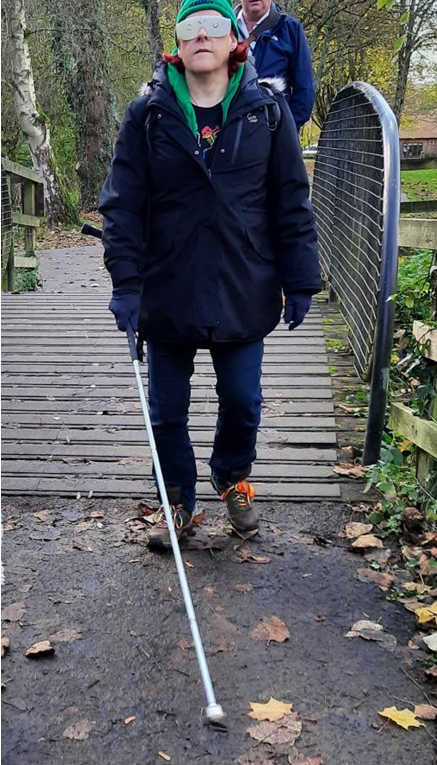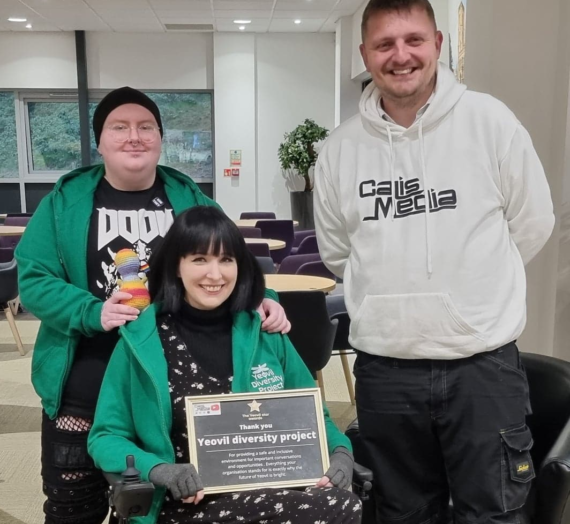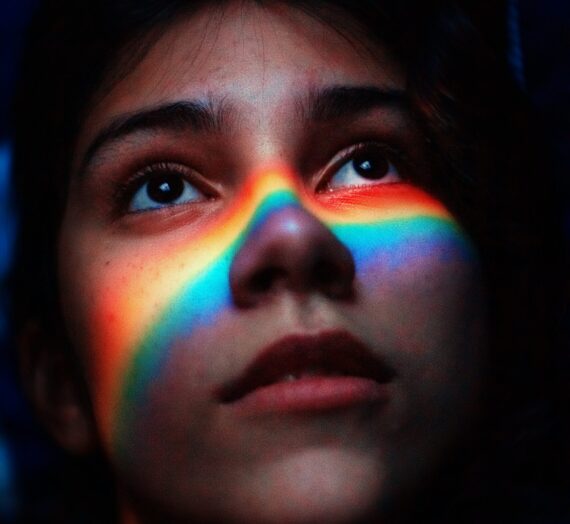Today I was lucky enough to be able to attend a session run by Steve Hyde from the Royal National Institute of Blind People. Steve is the Regional Campaigns Officer for the South West of England. In addition to myself there were representatives from Zwings, South Somerset District Council and the police.
Steve started the awareness session by introducing himself and describing how he got involved with the RNIB. He is, himself, visually impaired and so has lived experience of the things he tells you about.
After the introductions Steve presented us with the equipment we would be using during the walk. Although the session was described as a blindfold walk, we weren’t using blindfolds. Instead, we were provided with glasses, each of which was designed to allow the wearer to experience different visual impairments. What it feels like to navigate the world with tunnel vision, macular degeneration, diabetic retinopathy, and cataracts were the conditions that we would be learning about.
The first three conditions above limited our sight but it was still possible to make out things around you. Standing still experiencing tunnel vision was the worst of the three for me. I couldn’t see anything other than what I was looking directly at. To see anything that would normally be in the corner of my vision I had to turn either my head or my whole body. My awareness of what was around me was seriously limited. Wearing the macular degeneration glasses was more manageable for me because, even though I could not see what was directly ahead of me, I was able to maintain a level of awareness of my surroundings because of what I could see at the periphery of my vision. The glasses that simulated cataracts were the hardest because everything was blurred and there were only small areas where things were slightly clear.
After Steve had given us all a chance to try on the glasses, he talked about the different types of canes that were available. Guide canes, symbol canes, long canes. There are different types, and they can have different ends. Some require training, others don’t. Each of us were provided with a long cane which we used throughout the walk, whether wearing glasses or not.
Once Steve had finished his talk we set off on the walk. Almost immediately we stopped to talk about crossings. The walk was starting and ending at Goldenstones leisure centre, and we were going to be walking through Ninesprings Country Park. In the car park outside the entrance to the centre is a crossing. We stopped here and Steve described the different styles of crossing, and the features that they had which helped people who were visually and hearing impaired. For instance, pedestrian controlled crossings have a control underneath the control box which someone who is hearing impaired can put their fingers on, and when the crossing allows people to cross will feel spin so that they know it is safe to cross.
Although I’m familiar with most types of crossing there was one, I’d never heard of. This newest crossing using sensors to detect if there is a person waiting and will only stop traffic if there is. It still requires someone to press a button to request traffic is stopped but if that person moves off it won’t halt traffic. It also halts traffic until the person is safely across the road, unlike others where people have a set amount of time to get safely across the road before traffic is allowed to move on again.
One issue that Steve mentioned with regards to crossings is something that other minority groups like the LGBT+ community have been celebrating in recent times; Councils installing rainbow and transgender coloured crossings. As much as I’ve liked seeing these installed because they show support for the gay and transgender communities, while they are perfectly fine for those of us who are not visually impaired they do result in problems for visually impaired individuals and for guide dogs. Rather than replacing existing crossings, perhaps they should be installed alongside them so that the existing ones are there for those that rely on them. Or perhaps we can come up with other ways to show support for LGBT+ communities within our local infrastructure, like Taunton’s new rainbow path that quite literally paints its commitment through the town but doesn’t compromise important amenities.
The walk through Ninesprings wearing the glasses varied in difficulty. Wearing the tunnel vision glasses it was possible to walk because you could move your head to see what was in front of you but all awareness of what was not directly in vision was gone and so to be aware of other people or cyclists meant stopping and turning around.
Another challenge that came up was when using the cane. Depending on the ground it was possible to get it to catch and stick resulting in it hitting you in the stomach. Also due to the number of leaves on the path, at times you could not sense the path and so if the visual impairment was severe enough you wouldn’t know if you were on the path or on the grass.
The macular degeneration glasses were like the tunnel vision ones. It was possible to make out things as you walked but you could not see what was directly in front of you, therefore you had to turn your head and use peripheral vision to see things as you walked.
The final pair of glasses I tried was the cataract ones. I used these for the walk back to Goldenstones. You could just about make out bright shapes in front of you as you walked, which was fortunate because some of the others were wearing Hi-Viz jackets. Beyond that you couldn’t see much. When the sun came out it was more difficult to make out anything. By this point I was more confident about walking in the glasses and using the cane. However, the cataract glasses were, for me, the worst of the three that I tried. Not because I couldn’t make out much but because I couldn’t see anything any distance in front of me.
Not knowing how far it was to the small bridge in Ninesprings was disconcerting because it meant that I had no concept of where I was in relation to it and how far I’d walked nor how much further I had to go before reaching the leisure centre. After crossing the bridge, I removed the glasses and walked back fully aware of what was around me.
Chatting with Steve as we made our way back, I mentioned that I’ve always said that I need to wear my glasses because without them anything in the distance is blurred. I can make out what something is by its shape and size but can’t make out details. Having done the walk and learned more about what it’s like to be visually impaired I appreciate what eyesight I do have and the fact that I can make my way around, even without my glasses, without any real issue. I’m very fortunate as a result, something that many, many other people aren’t.




